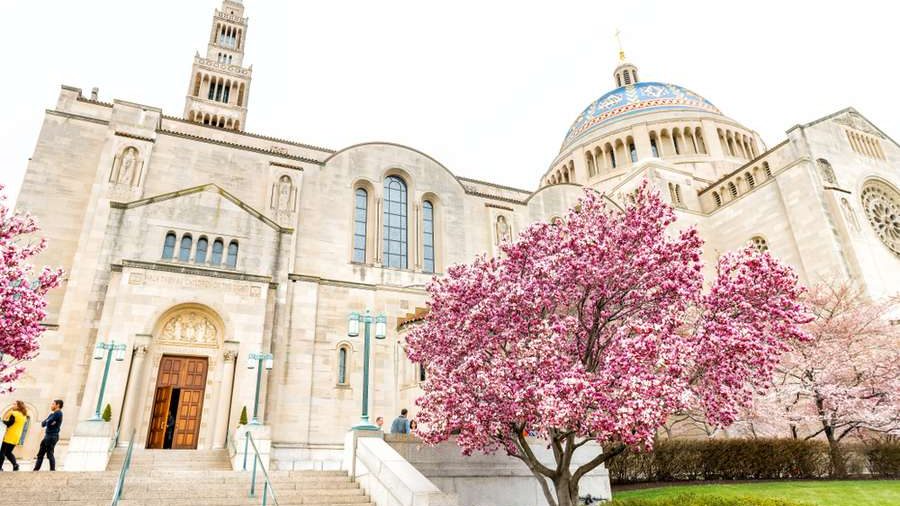The Basilica of the National Shrine of the Immaculate Conception in Washington, D.C., will remain open with a normal Mass and confession schedule.
The shrine said it is maintaining its public ministry schedule even after the Archdiocese of Washington announced Thursday that public Mass will be suspended in the archdiocese in the wake of the COVID-19 outbreak.
Jackie Hayes, director of communications for the National Shrine, confirmed to CNA on Friday, March 13, that despite Washington Archbishop Wilton Gregory’s announcement Thursday evening, which closed the archdiocese’s Catholic schools and canceling all public Masses, the shrine will continue operations as normal.
While the Basilica of the National Shrine of the Immaculate Conception is located within the territorial bounds of the Archdiocese of Washington, it is not a diocesan church.
On Thursday, shrine rector Msgr. Walter Rossi released a statement saying that unless the church is ordered by the government to cease operations, Mass and other sacraments will continue on their normal schedule.
“We are committed to keeping the doors of America’s Catholic Church open. However, should circumstances change and government authorities require us to close to the public, we intend to continue with the celebration of the Holy Sacrifice of the Mass,” said Rossi.
The shrine is known as “America’s Catholic Church” as it is the largest Catholic church in North America and it is designed to represent the various cultural traditions that make up the Catholic population in the United States. It has a seating capacity of 10,000 people, making it the third-largest Catholic church in the entire world.
While Mass will go on as scheduled, Rossi announced on Thursday that “reasonable precautions” would be taken to stymie the spread of COVID-19. These include the removal of holy water from the many fonts at the shrine, as well as the ceasing of the sign of peace and distribution of the Eucharist under the species of wine.
“These precautionary measures are constantly under review and as circumstances change, we will take extra precautions,” said Rossi.
Additionally, Mass will be live-streamed on the shrine’s website, for those who are unable to attend Mass due to illness or fear of contracting illness.
In the statement, Rossi said that it was important to “balance our responsibility to care for the faithful with the need to provide a place of prayer and pilgrimage for those who seek it.”
“As we have seen this week from increased attendance at our daily Masses, there are many who are seeking the solace that can only be found in the celebration of the Holy Mass. We will take prudent and rational steps to protect ourselves and our visitors, while also seeking God’s guidance and protection through the intercession of the Blessed Virgin Mary,” he said.
There was some confusion among the faithful in the DC area regarding if the basilica was to remain open. Rossi’s statement was released about five hours before Archbishop Wilton Gregory of Washington announced that all public Masses in the archdiocese would be canceled until further notice.
“We are aware of the rapidly developing district and state guidelines regarding the coronavirus. My number one priority as your Archbishop is to ensure the safety and health of all who attend our Masses, the children in our schools, and those we welcome through our outreach and services. Please know that this decision does not come lightly to close our schools or cancel Masses,” Archbishop Gregory said in the March 12 statement.
“We are profoundly saddened that we are not able to celebrate our sacraments as a community for the time being but we know Christ remains with us at all times – specifically in times of worry like this.”
“I have made available pastoral and spiritual resources as well as TV Mass on our website that I encourage you to use. I also invite you to join us for Mass and prayer via livestream in our social media,” said Gregory.
“May the peace of Christ settle any anxieties and fear we may have. Let us continue to pray for the people whose lives have been impacted by the coronavirus as well as those who continue to care for them.”

